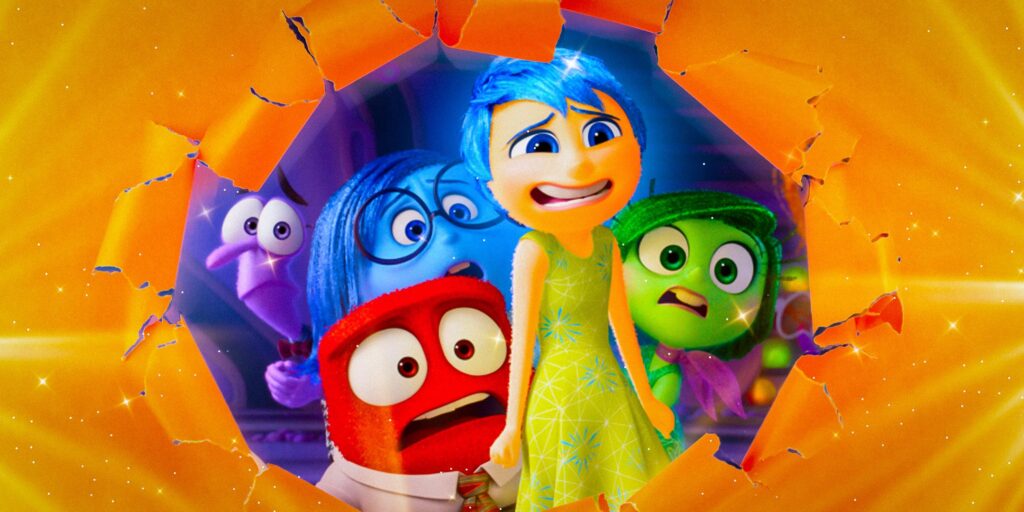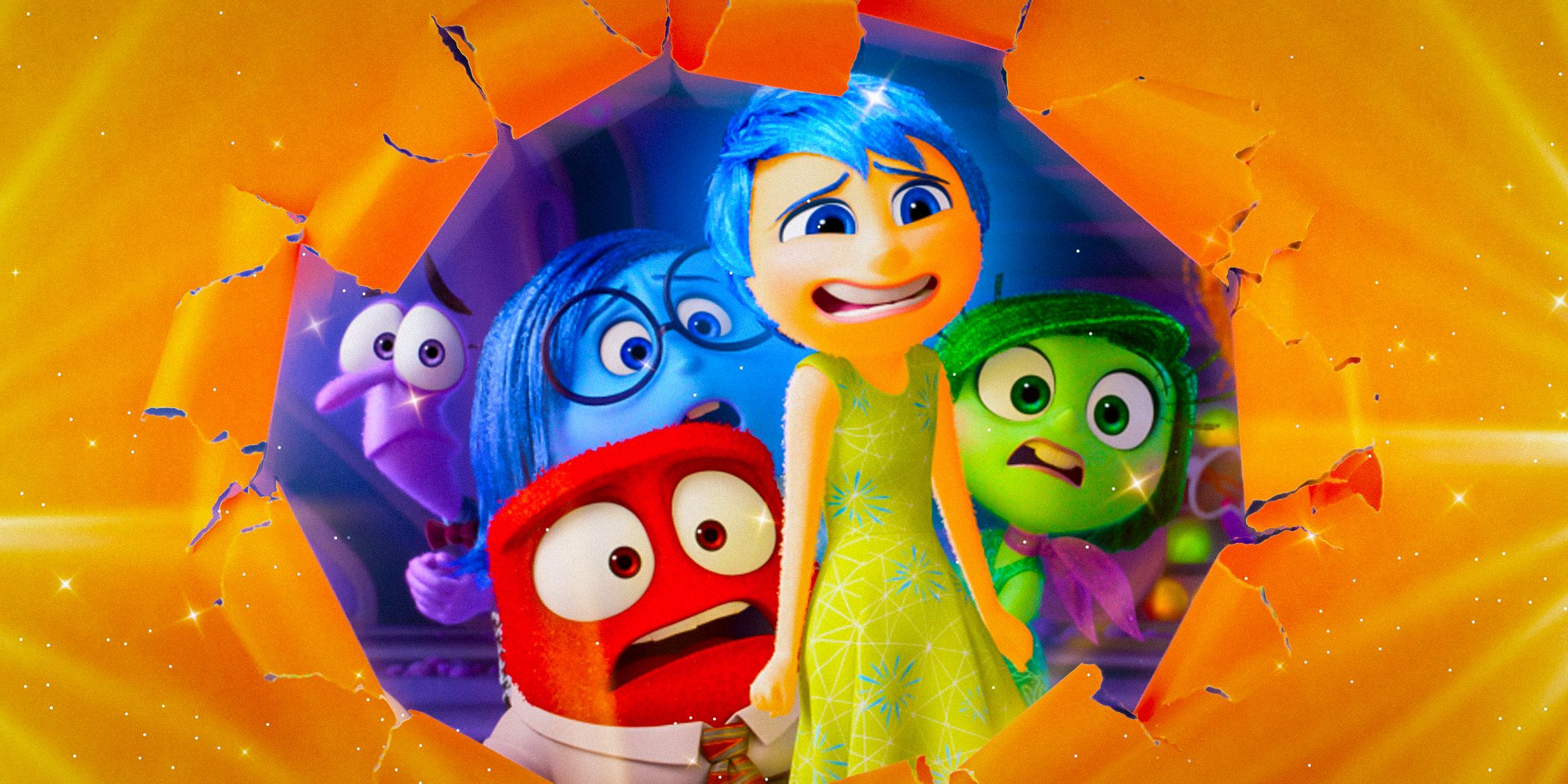
Exploring the Nuanced **Emotions in Inside Out 2** Characters: A Deep Dive
Pixar’s *Inside Out* captivated audiences with its innovative portrayal of **emotions** as characters within the mind. The sequel, *Inside Out 2*, promises to delve even deeper into the complexities of adolescent emotions, introducing new characters and exploring the evolving emotional landscape of Riley, now a teenager. This article will dissect the key **emotions in Inside Out 2** and analyze how these characters contribute to a richer understanding of emotional development.
The Core Five: A Foundation of Feelings
The original film introduced us to Joy, Sadness, Anger, Fear, and Disgust – the core **emotions** that guided Riley through her childhood. These characters established a vibrant and relatable framework for understanding basic human feelings. In *Inside Out 2*, these foundational **emotions** remain, but their roles and interactions evolve as Riley navigates the challenges of adolescence. We can expect to see Joy’s unwavering optimism tested, Sadness’s empathy becoming even more crucial, Anger’s outbursts intensifying, Fear’s anxieties amplified, and Disgust’s protective instincts heightened. The dynamic between these core **emotions** will be crucial to Riley’s journey.
Joy: The Everlasting Optimist
Joy, voiced by Amy Poehler, remains the steadfast leader, striving to maintain Riley’s happiness. However, adolescence throws new challenges her way. We anticipate seeing Joy grapple with the realization that happiness isn’t always the only, or even the best, emotion to experience. Her journey in *Inside Out 2* will likely involve learning to accept and integrate the other **emotions**, even the ones that seem negative.
Sadness: The Power of Empathy
Sadness, voiced by Phyllis Smith, evolves from a misunderstood emotion to a vital component of Riley’s emotional well-being. *Inside Out 2* might explore how Sadness’s empathy helps Riley connect with others and process difficult experiences. The movie will likely highlight the importance of acknowledging and validating sadness, rather than suppressing it.
Anger: The Fiery Protector
Anger, voiced by Lewis Black, represents Riley’s sense of justice and her reaction to unfairness. As Riley enters adolescence, Anger’s outbursts may become more frequent and intense. *Inside Out 2* will likely explore the challenges of managing anger in a healthy way, differentiating between righteous indignation and destructive rage.
Fear: The Anxious Guardian
Fear, voiced by Tony Hale (replacing Bill Hader), is responsible for keeping Riley safe from danger. In *Inside Out 2*, Fear’s anxieties may be amplified as Riley faces new social pressures and uncertainties. The movie will likely delve into the nature of anxiety and the importance of facing fears in a controlled and supportive environment.
Disgust: The Critical Protector
Disgust, voiced by Liza Lapira (replacing Mindy Kaling), protects Riley from physical and social contamination. As Riley navigates the complexities of teenage social life, Disgust’s role in filtering out unwanted influences becomes even more important. *Inside Out 2* will likely explore the nuances of social judgment and the fine line between healthy boundaries and harmful prejudice.
Introducing the Newcomers: Navigating Adolescence
*Inside Out 2* introduces a wave of new **emotions**, reflecting the complex and often overwhelming feelings associated with adolescence. These new characters represent more nuanced and sophisticated emotional states, adding layers of complexity to Riley’s internal world. The introduction of these new **emotions** highlights the significant changes occurring in Riley’s brain as she matures.
Anxiety: The Overwhelmed Planner
Anxiety, voiced by Maya Hawke, is arguably the most prominent new **emotion** introduced in *Inside Out 2*. Anxiety embodies the worries, fears, and uncertainties that often accompany adolescence. She’s portrayed as constantly planning for the worst-case scenario, highlighting the tendency for teenagers to overthink and anticipate potential problems. The inclusion of Anxiety is particularly relevant in today’s world, where young people face increasing pressures and uncertainties. [See also: Managing Anxiety in Teenagers] Her presence underscores the importance of addressing mental health concerns and providing young people with the tools to cope with anxiety in a healthy way. The film should provide a nuanced portrayal of anxiety, demonstrating that while it can be overwhelming, it can also be a motivator and a sign of caring.
Envy: The Yearning Gazer
Envy, voiced by Ayo Edebiri, embodies the feeling of wanting what others have. In the context of *Inside Out 2*, Envy likely represents Riley’s desire to fit in, be popular, and achieve the same level of success as her peers. This **emotion** can lead to feelings of inadequacy and resentment, but it can also be a motivator for self-improvement. The film will likely explore the complexities of envy, differentiating between healthy aspiration and destructive jealousy.
Embarrassment: The Shrinking Violet
Embarrassment, voiced by Paul Walter Hauser, represents the feeling of shame and self-consciousness that often accompanies adolescence. Embarrassment likely plays a significant role in Riley’s social interactions, influencing her behavior and shaping her self-perception. The film may explore how Riley learns to cope with embarrassing moments and develop a stronger sense of self-acceptance.
Ennui (Boredom): The Apathetic Observer
Ennui, voiced by Adèle Exarchopoulos, represents boredom and apathy. This **emotion** may seem less intense than the others, but it can be a powerful force, leading to feelings of disconnection and disengagement. In *Inside Out 2*, Ennui likely reflects Riley’s growing independence and her search for meaning and purpose. The film might explore how Riley finds ways to combat boredom and discover new passions.
The Interplay of Emotions: A Complex Ecosystem
The true brilliance of *Inside Out* lies in its portrayal of **emotions** not as isolated entities, but as interconnected components of a complex ecosystem. In *Inside Out 2*, the interplay between the original **emotions** and the new additions will be even more intricate, reflecting the multifaceted nature of adolescent emotional life. The way these **emotions** interact and influence each other will determine Riley’s ability to navigate the challenges of growing up.
For example, Anxiety might clash with Joy, creating internal conflict as Riley struggles to balance optimism with realistic concerns. Envy might fuel Anger, leading to resentment and frustration. Embarrassment might trigger Fear, causing Riley to withdraw from social situations. Ennui might dampen Joy’s enthusiasm, making it harder for Riley to find happiness in everyday activities. The dynamic between these **emotions** will be constantly shifting, reflecting the unpredictable nature of adolescence.
The Importance of Emotional Intelligence
*Inside Out 2* offers a valuable opportunity to promote emotional intelligence, the ability to understand and manage one’s own **emotions** and the **emotions** of others. By personifying **emotions** as characters, the film makes complex emotional concepts accessible to a wide audience. *Inside Out 2* will likely emphasize the importance of accepting all **emotions**, even the ones that feel negative or uncomfortable. The movie can teach viewers that all **emotions** serve a purpose and that suppressing **emotions** can be detrimental to mental health. [See also: Benefits of Emotional Intelligence] Furthermore, the film can demonstrate the importance of developing healthy coping mechanisms for managing difficult **emotions**, such as anxiety, anger, and sadness.
Conclusion: A Deeper Understanding of the Teenage Mind
*Inside Out 2* promises to be more than just a sequel; it’s an opportunity to explore the complex and often turbulent world of adolescent **emotions**. By introducing new characters and delving deeper into the interplay of feelings, the film aims to provide a more nuanced and realistic portrayal of the teenage mind. As Riley navigates the challenges of growing up, viewers will gain a greater understanding of their own **emotions** and the **emotions** of those around them. The film will serve as a valuable tool for promoting emotional intelligence and fostering empathy, ultimately helping young people navigate the complexities of adolescence with greater confidence and resilience. The new **emotions** in *Inside Out 2* accurately reflect the struggles that teenagers face daily. This makes *Inside Out 2* a must-see for families and individuals alike, offering both entertainment and valuable insights into the human experience. The exploration of **emotions in Inside Out 2** allows for a deeper understanding of ourselves. Hopefully, the portrayal of these **emotions** provides a cathartic experience for viewers.

